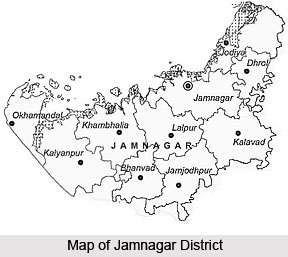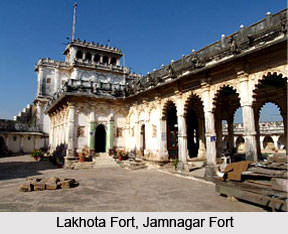 Jamnagar district of Gujarat is situated on the southern coast of the Gulf of Kutch and its official headquarters are located in Jamnagar city. The district is a portion of Saurashtra, in western Gujarat and boasts of housing the largest grass root refinery of Reliance Petrochemicals in the entire world. Essar and Tata are some of the renowned industrial companies which conduct their operations in this Indian district. Travellers will come across numerous tourist locales in Jamnagar district which consist of Khijadia Bird Sanctuary, Marine National Park, Lakhota Fort and several others.
Jamnagar district of Gujarat is situated on the southern coast of the Gulf of Kutch and its official headquarters are located in Jamnagar city. The district is a portion of Saurashtra, in western Gujarat and boasts of housing the largest grass root refinery of Reliance Petrochemicals in the entire world. Essar and Tata are some of the renowned industrial companies which conduct their operations in this Indian district. Travellers will come across numerous tourist locales in Jamnagar district which consist of Khijadia Bird Sanctuary, Marine National Park, Lakhota Fort and several others.
History of Jamnagar District
Historical records claim that Dwarkadhish Temple, an ancient temple dedicated to Lord Krishna is present in Jamnagar District. This famous temple is believed to have been built by Vajarnabh, the great grandson of Krishna. The area of this district is said to have been conquered by Sultan Mohammed Beghdo, during 1480 A.D. Following Humayun`s conquest of Gujarat, the `Halar` kingdom was established in Jamnagar. The founder of this district is Jam Raval, a descendant of Jam Hala, due to which this region was called `Halar` in olden days. After Indian independence, Jam Shree Digvijaysinghji was the first Raj Pramukh of Saurashtra who played a significant role in assisting Sardar Vallabhbhai Patel in the integration of Indian princely states. Finally in 1949, Jamnagar District came into existence, from the states of Thana, Navanagar, Dhrafa, Dhrol and portions of Jalia Devani.
Geography of Jamnagar District
The geographical coordinates of Jamnagar District are 22 ° 13 minutes North and 69 ° 42 minutes east. The maximum temperature of this district is 42 ° centigrade and the minimum temperature is 10 ° centigrade. Average rainfall in this area is 554 mm.

Demography of Jamnagar District
Jamnagar District possesses a population of 21, 59,130, as per the records of the 2011 census and a literacy rate measuring 74.4%. The regional sex ratio is about 938 females for every 1000 males.
Education in Jamnagar District
Jamnagar district possesses 1316 primary schools, 156 secondary schools and 45 higher secondary schools. Jamnagar is home to the country`s only Ayurvedic University, named Gujarat Ayurved University, offering post graduate and diploma courses in Ayurvedic medicines and pharmaceutical science, yoga and Indian naturopathy. The Industrial Training Institutes (ITI) in Jamnagar impart training in various disciplines such as, cutting and sewing, welding, repairing, fabrication, armature and motor rewinding, hair and skin care, electronic system maintenance among various others.
Administration of Jamnagar District
Jamnagar`s different administrative divisions, known as `talukas` include Kalavad, Dhrol, Lalpur, Jam Jodhpur and Jodiya.
Economy of Jamnagar District
Jamnagar District is a major producer of brass parts and above 70 percent of India`s brass parts supply is derived from this part of the nation. As many as 4,500 units are engaged in manufacturing brass parts and this area supplies these materials to Mumbai, Bangalore and Delhi. Tie-dyed fabric, referred to as `Bandhani` are also produced on a large scale in this district. Oil mills, engineering and machinery and plastics form the other industrial sectors of Jamnagar. The important local industries comprise plastic products, food products and rubber which are controlled by SSI. Gujarat State Fertilisers Corporation (GSFC) and Reliance Industries are some of the well-known petroleum refineries existent here. Jamnagar District contains over 12, 700 small scale industries.
Tourism in Jamnagar District
Jamnagar District is home to several beautiful tourist destinations which involve Lakhota Fort, Darbargadh Palace, Pratap Vilas Palace, Beach of Pirotan Island, Khijada Mandir, Vardhmam Shah`s Temple, Mota Ashapura Maa Temple and so on. The Marine National Park located here is the oldest marine park of India and provides refuge to innumerable aquatic species. Based about 10 km from Jamnagar, is the Khijadia Bird Sanctuary which possesses birds like Black-Winged Stilt, Pheasant-Tailed Jacana, Falcons, Great Crested Grebe and various others.






